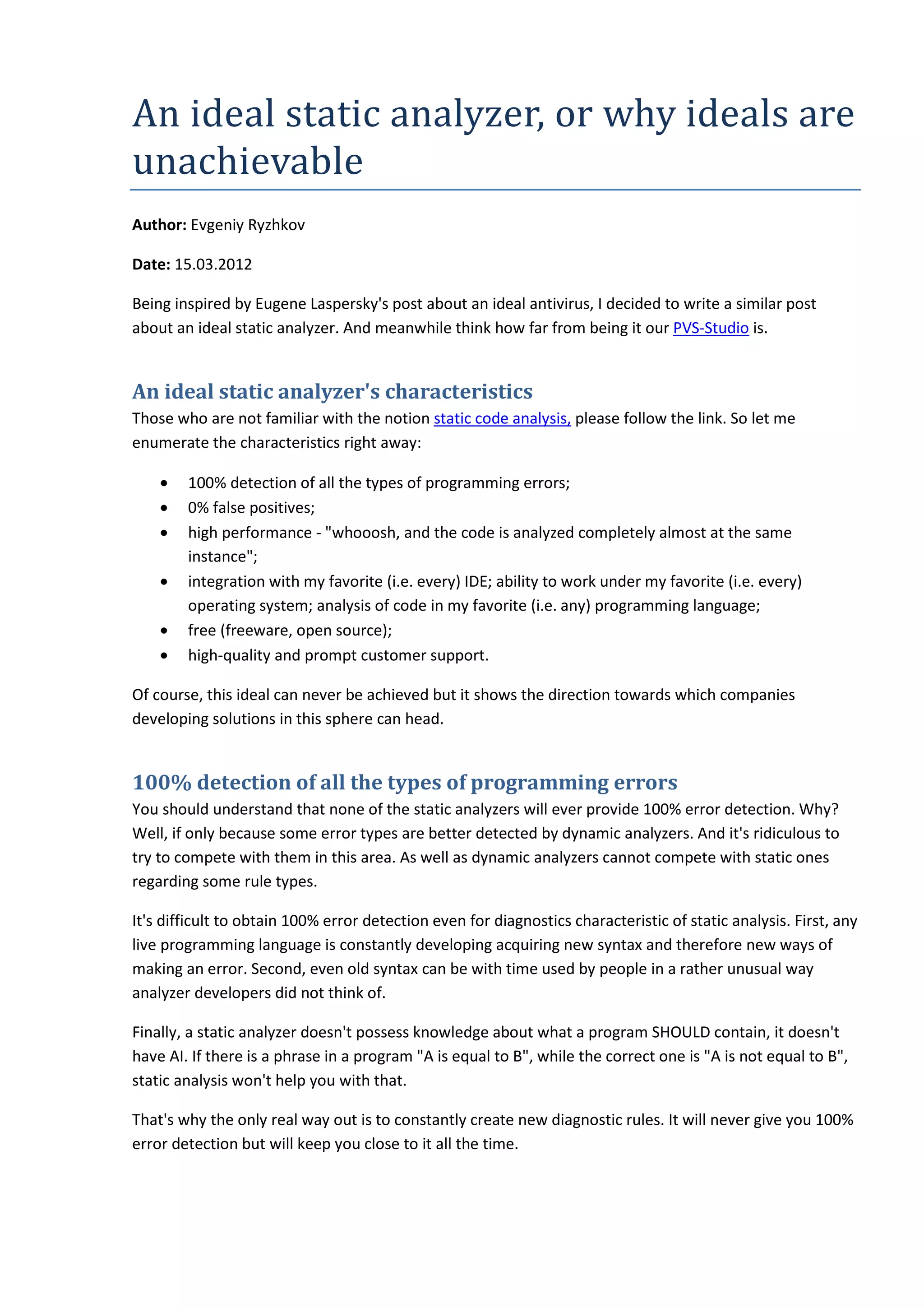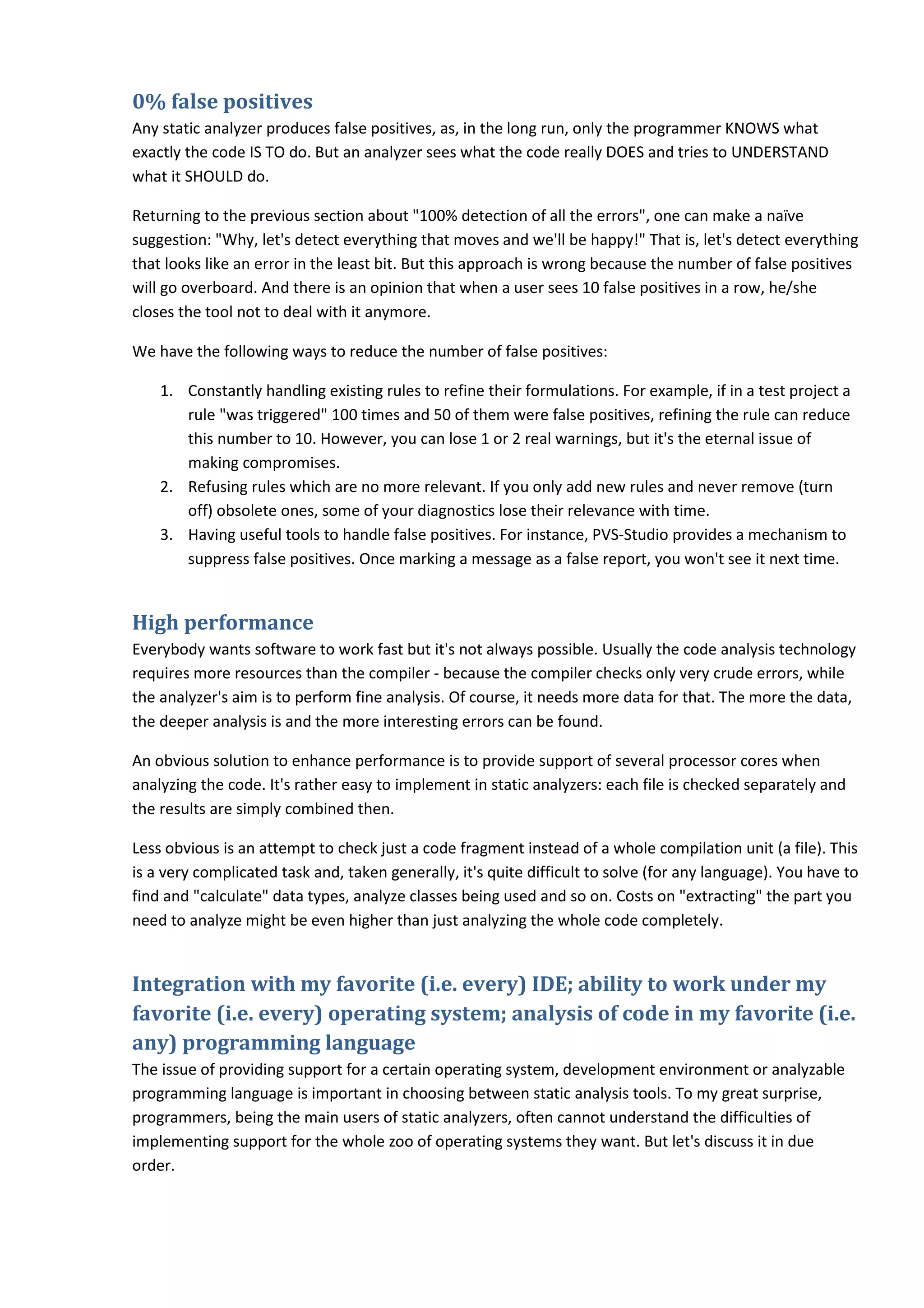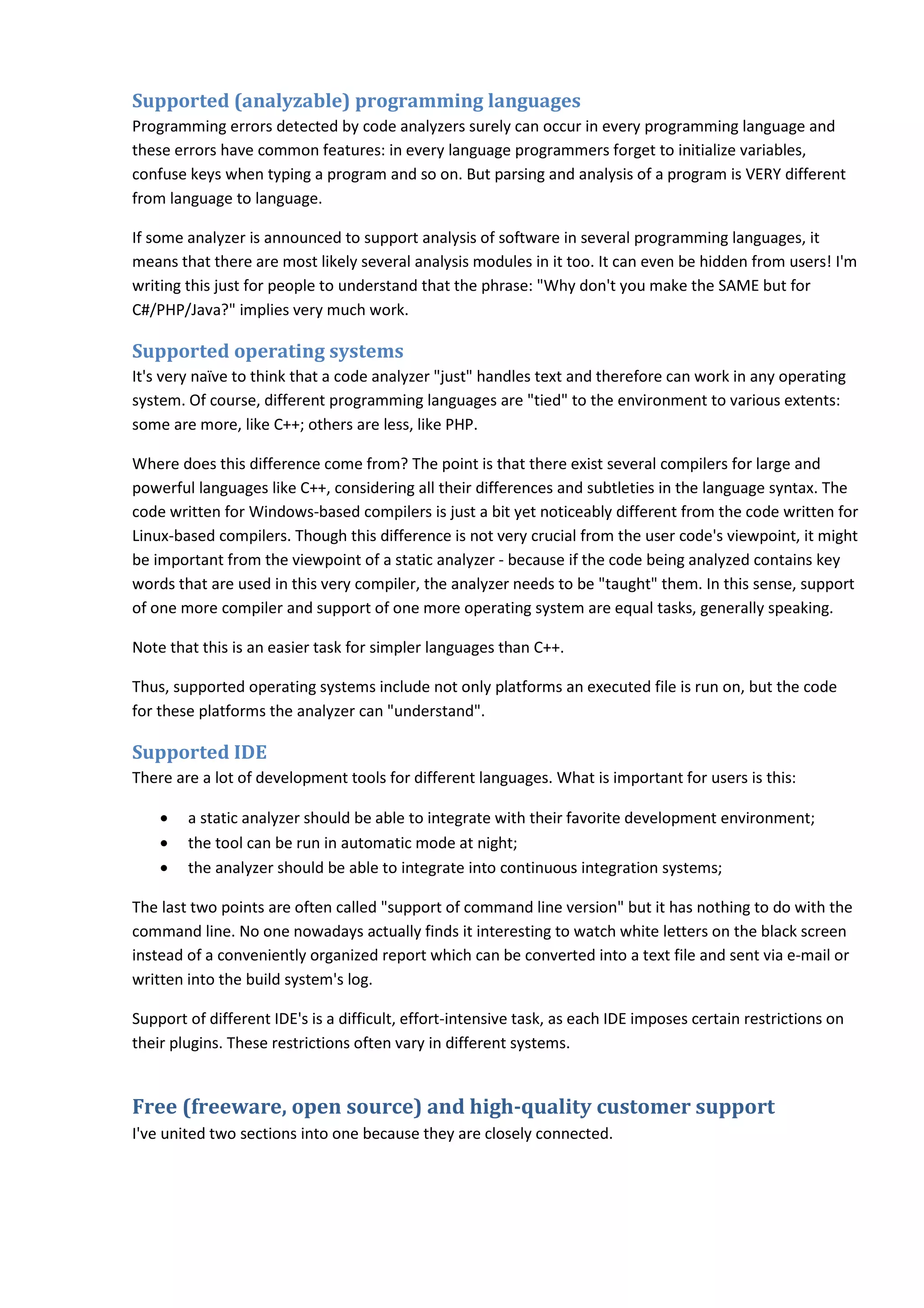The document discusses the concept of an ideal static analyzer, outlining characteristics such as 100% error detection, 0% false positives, high performance, and comprehensive support for various IDEs and programming languages. It highlights the inherent challenges in achieving these ideals, including the impossibility of complete error detection and the prevalence of false positives. Additionally, the necessity for ongoing rule refinement and the importance of quality customer support in the development and maintenance of static analysis tools are emphasized.



